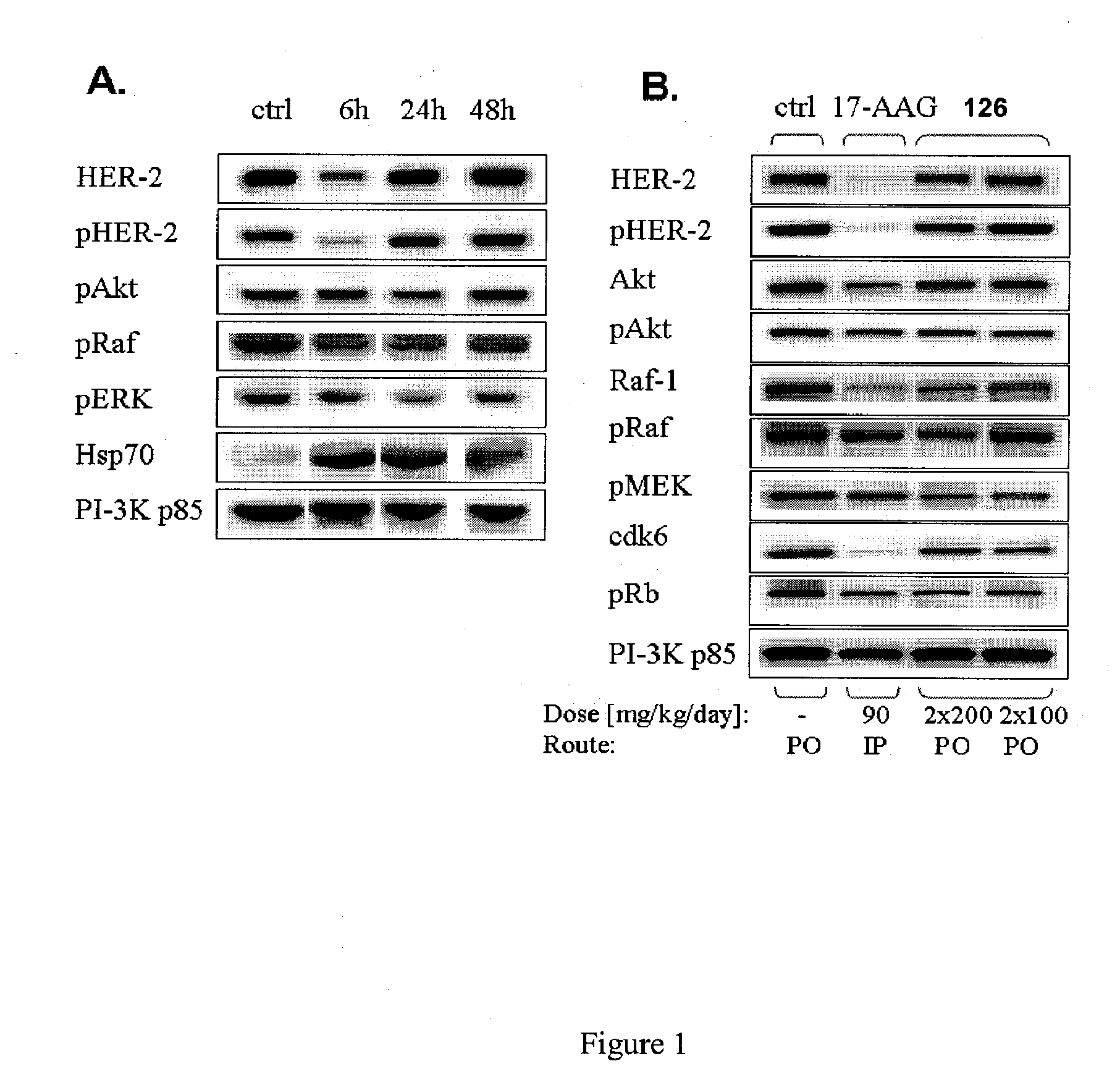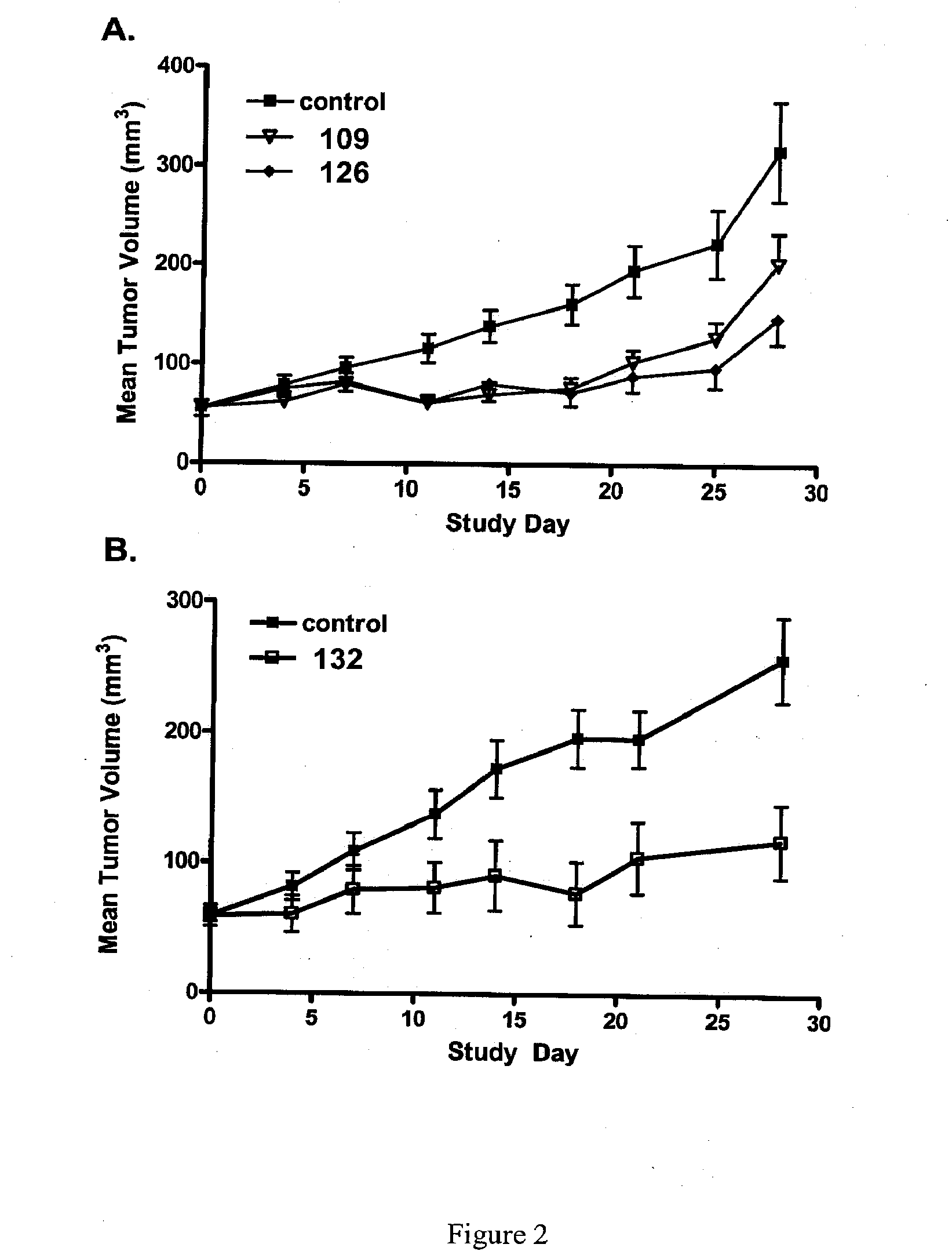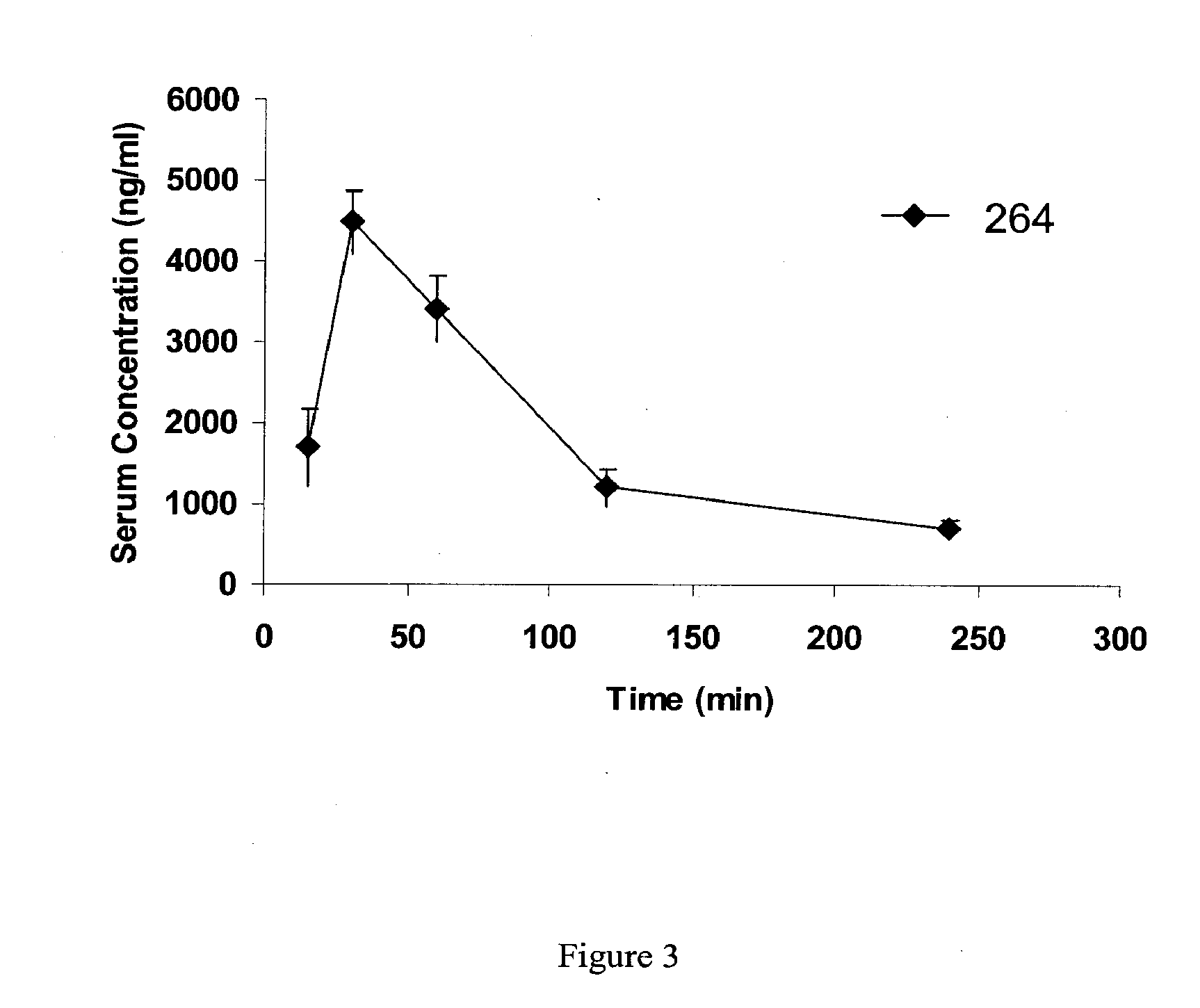Orally Active Purine-Based Inhibitors of Heat Shock Protein 90
a purine-based inhibitor and heat shock protein technology, applied in the field of purine analogs, can solve the problems of difficult formulation and administration, hepatic dose limiting toxicity of ansamyins, and inability to easily be synthesized
- Summary
- Abstract
- Description
- Claims
- Application Information
AI Technical Summary
Problems solved by technology
Method used
Image
Examples
example 1
Synthesis of 8-(2,5-dimethoxybenzyl)-N-9-butyladenine (1)
[0192]
Step 1: A solution of 5-amino-4,6-dichloropyrimidine (1 mmol) in n-BuOH was treated with Et3N (1.2 mmol) and n-Butylamine (1.0 mmol) at 80 C. After 16 h, solvent was removed under reduced pressure. The residue was dissolved in EtOAc, the organic layer washed with water and then dried (MgSO4). Filtration and removal of solvent gave 6-chloro-5-amino-4-butyl pyrimidine as a brown solid. Rf=0.5 in 1:1 EtOAc:hexane. 1H NMR (CDCl3) δ 8.07 (s, 1H), 4.88 (br s, 1H), 3.49 (m, 2H), 3.35 (br s, 2H), 1.6 (m, 2H), 1.44 (m, 2H), 0.95 (t, 3H).
Step 2: To a solution of 2,5-dimethoxyphenylacetic acid (1 mmol) and Et3N (1 mmol) in CH2Cl2 was added p-toluenesulfonyl chloride (1 mmol) at rt. After 1 h, the mixture was treated with a solution of the product of step 1, 6-chloro-5-amino-4-butyl pyrimidine (1 mmol in CH2Cl2), followed by addition of Et3N (2 mmol). The resultant mixture was refluxed for 20 h. Solvent was removed and the residu...
example 2
Synthesis of 8-(2,5-dimethoxybenzyl)-N9-pentynyl-2-fluoro adenine
[0194]
Step 1: 2-(2,5-Dimethoxy-phenyl)-N-(2,5,6-triamino-pyrimidin-4-yl)-acetamide, HCl
[0195] A solution of 2,4,5,6-tetraminopyrimidine (52.8 g, 378 mmol) in NMP (750 ml) was treated at 70° C. with 2,5-dimethoxyphenyl acetyl chloride (90 g, 419 mmol). After cooling to r.t., the precipitate was collected by filtration and washed with EtOAc to give the title compounds as a pale yellow powder (127 g, 95%). 1H NMR (DMSO-d6) δ 9.12 (s, 1H), 7.80-7.40 (m, 3H), 6.22 (s, 2H), 6.04 (s, 4H), 4.41 (s, 3H), 4.29 (s, 3H), 4.25 (s, 2H); MS 319 (M+1).
Step 2: 8-(2,5-Dimethoxy-benzyl)-9H-purine-2,6-diamine
[0196] Sodium metal (2.3 g, 100 mmol) was dissolved in n-BuOH (50 ml) at 70° C. To this was added the acetamide of step 1, above (5.0 g, 14.1 mmol), and the mixture was heated to reflux for 1.5 h. Neutralization with 6N HCl to pH 8-9, extraction with EtOAc, drying, and evaporation gave the title compound as a pale yellow powder (3....
example 3 8-(
2,5-Dimethoxy-benzyl)-2-fluoro-9-(4-methyl-pent-3-enyl)-9H-purin-6-ylamine
[0200]
[0201] isolated as solid, retention time=7.70.
PUM
| Property | Measurement | Unit |
|---|---|---|
| pH | aaaaa | aaaaa |
| temperature | aaaaa | aaaaa |
| temperature | aaaaa | aaaaa |
Abstract
Description
Claims
Application Information
 Login to View More
Login to View More - R&D
- Intellectual Property
- Life Sciences
- Materials
- Tech Scout
- Unparalleled Data Quality
- Higher Quality Content
- 60% Fewer Hallucinations
Browse by: Latest US Patents, China's latest patents, Technical Efficacy Thesaurus, Application Domain, Technology Topic, Popular Technical Reports.
© 2025 PatSnap. All rights reserved.Legal|Privacy policy|Modern Slavery Act Transparency Statement|Sitemap|About US| Contact US: help@patsnap.com



